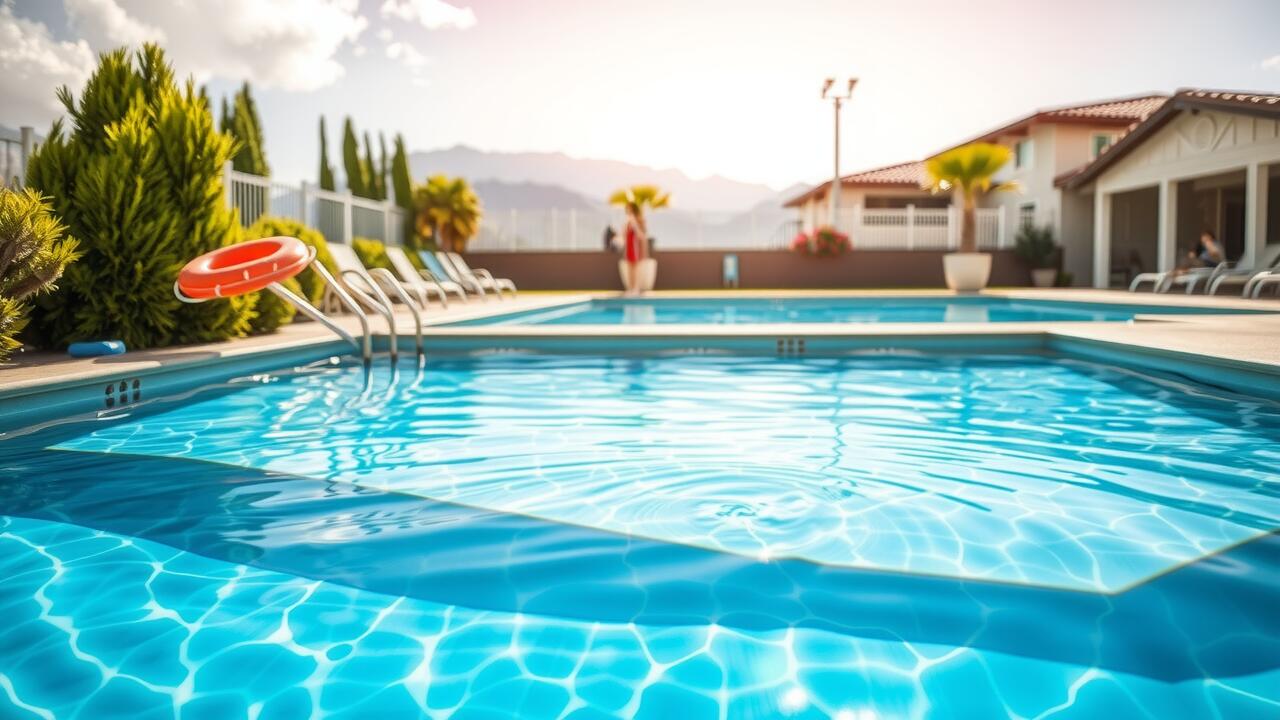
Technological Advances in Water Safety
Recent years have witnessed significant innovation in water safety technology, aimed at reducing the incidence of drownings. Advanced surveillance systems now integrate artificial intelligence to monitor pool environments, allowing for rapid detection of distress signals from individuals in the water. These systems can alert lifeguards or caregivers instantly, significantly enhancing response times. Additionally, wearable devices designed for swimmers provide real-time data on physical health, ensuring that potential emergencies can be addressed swiftly.
Floating devices equipped with GPS technology have also emerged, enabling quick retrieval in emergencies. These smart buoys can automatically signal responders in the event of a submerged swimmer, providing precise location tracking. Alongside these improvements, automatic pool covers and alarm systems have become more accessible. These enhancements not only ensure that pools are safer but also promote proactive strategies for preventing drownings in residential and public facilities.
Innovations in Pool Safety Equipment
Recent developments in pool safety equipment have focused on enhancing accident prevention measures. Smart sensors now play a crucial role, providing real-time monitoring of pool activity. These sensors are capable of detecting unusual movements or prolonged periods of inactivity in the water. Some systems can send immediate alerts to designated smartphones, enabling quicker responses during emergencies.
In addition to advanced monitoring, physical safety devices have evolved significantly. Pool covers that automatically engage when not in use offer reliable barriers against accidental falls. Furthermore, innovations in flotation devices are designed to cater to various age groups and skill levels, ensuring that safety options are accessible for everyone. These evolving technologies reflect a growing commitment to pool safety and aim to significantly reduce the risk of drowning incidents.
Impact of Lifestyle Choices on Drowning Incidents
Lifestyle choices play a significant role in the occurrence of drowning incidents. Engaging in high-risk activities near water can dramatically increase the likelihood of accidents. In particular, the consumption of alcohol often leads individuals to underestimate dangers associated with swimming and poolside activities. Many cases have shown that intoxication impairs judgment, decreases awareness, and leads to risky behaviors, all of which contribute to drowning events.
Additionally, the level of supervision provided to children and inexperienced swimmers is crucial. Parents and guardians sometimes adopt a relaxed attitude during social gatherings or parties, resulting in fewer safeguards in place. This lack of vigilance can transform a fun day at the pool into a tragic incident within moments. Studies reveal that maintaining active supervision, even in seemingly safe environments, is vital in reducing potential drowning risks related to lifestyle choices.
The Influence of Alcohol and Supervision
Alcohol consumption significantly increases the risk of drowning incidents, particularly in social settings such as pool parties or family gatherings. Impaired judgment and decreased physical coordination often accompany higher alcohol intake, leading to dangerous situations around water. Statistics show that many drowning cases involve individuals who had consumed alcohol shortly before the incident. This trend highlights the need for active supervision, especially when alcohol is involved.
Effective supervision can dramatically reduce the likelihood of drowning. Designating a sober, vigilant adult as a "water watcher" can provide an extra layer of safety for all ages. This individual should remain focused and free from distractions, ready to respond quickly in case of an emergency. Education around the dangers of combining alcohol and swimming can further raise awareness, reinforcing responsible behavior among adults in social scenarios.
Importance of Swimming Skills for All Ages
Swimming skills are essential for individuals of all ages, serving as a fundamental safety measure in preventing drowning incidents. From toddlers to seniors, the ability to swim provides individuals with confidence and a sense of security around water environments. Early exposure to swimming lessons equips children with the skills necessary to navigate pools, lakes, and other bodies of water effectively. This early education lays the groundwork for lifelong aquatic safety.
Adults and seniors can benefit significantly from swimming proficiency as well. Many adults enjoy recreational activities around water, such as boating or swimming at pools. For seniors, swimming can also serve as a low-impact exercise option that promotes health and mobility. By fostering swimming skills across various age groups, communities can create a safer environment, reducing the risk of drownings and enhancing overall water safety awareness.
Swimming Lessons and Accessibility
Access to swimming lessons is crucial for preventing drowning incidents. Many families may lack the resources or transportation to enroll their children in local swim programs. Community initiatives that provide free or low-cost lessons can help bridge this gap. Collaboration among schools, local governments, and nonprofits can create opportunities for individuals of all ages to learn essential swimming skills.
Furthermore, the inclusion of swimming lessons in school curriculums can foster a culture of safety. Introducing children to aquatic environments at an early age promotes confidence and comfort in the water. By prioritizing education on swimming techniques and water safety, communities can equip individuals with the knowledge needed to navigate aquatic situations effectively.
FAQS
What recent trends have been observed in Nevada pool drowning cases?
Recent trends indicate an increase in drowning incidents, often linked to factors such as lack of supervision, alcohol consumption, and inadequate swimming skills among individuals.
How have technological advances improved water safety?
Technological advances, including advanced pool safety equipment like alarms, automatic covers, and surveillance systems, have significantly enhanced water safety and can help prevent drowning incidents.
What role do lifestyle choices play in drowning incidents?
Lifestyle choices, particularly involving alcohol consumption and inadequate supervision, have been identified as significant contributors to drowning incidents, highlighting the importance of responsible behavior around water.
Why are swimming skills important for all ages?
Swimming skills are crucial for individuals of all ages as they enhance personal safety, increase confidence in water, and reduce the likelihood of drowning incidents.
How can communities improve access to swimming lessons?
Communities can improve access to swimming lessons by offering programs at reduced costs, providing transportation to lessons, and collaborating with local organizations to make swimming education available to everyone, especially children.